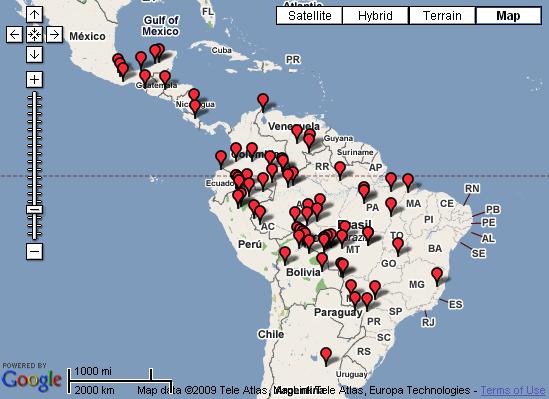The new NWFP-Digest is out. At least if you get the alert from FAO by email. If you go to the “Current issue” page on the website you still get the last issue. It should change in the next few days. But why no RSS feed? I’m beginning to think it’s just me that thinks RSS feeds can significantly boost ease of use at no cost.
Downmarket
More on the effect of the economic downturn on agrobiodiversity. First, there’s a series of reports from markets around the world from the BBC. A couple include information on food. From Beijing:
In the face of the economic crisis, Ms Liu said Chinese people are going back to buying basic vegetables like Chinese cabbage and potatoes.
And from Crawford Market, Mumbai:
Even spice sellers are feeling the pinch. Jabbar Prajapati says the cost of saffron has rocketed from 60 rupees (£0.82 / $1.20) per gram last year, to 300 rupees (£4 / $6) per gram. “People are not ready to buy at those prices,” he says.
Also, The Economist has a story about “victory gardens” in Little Rock, Arkansas. The money quote:
Many gardeners are focusing on “heirloom plants” rare varieties from earlier times that do not appeal to agribusiness.
Nibbles: Book, Moral and physical revulsion, DNA bank, Cacao genome, Cassava, Agroforestry, Dung products, Pork brain
- “How One Man Nearly Lost his Sanity, Spent a Fortune, and Endured an Existential Crisis in the Quest for the Perfect Garden.” Thanks, Danny.
- Bitter food=betrayal.
- DNA bank for Irish dairy and beef cattle being established.
- “… a document from 1631 … mentioned threats to the cacao crop.”
- USAID supports cassava farmers in Africa.
- The simpukng forest gardens of the Dayak deconstructed.
- Shit!
- 1170% of your daily cholesterol per serving. Sounds good to me.
Nibbles: Berries, Women, Marsh Arabs, Maple, Sorghum, Nuts, Conference, Banana
- Let the berry wars commence. Thanks to Hannes for taking sides.
- Women active in African agriculture. Well I never.
- Iraq’s marshes in trouble again. This time it’s drought.
- Gorosoe in Korea: “…it soothes my stomach after a hangover.”
- Vavilov set right on sorghum in China.
- Protected pine forest threatened by logging in Russia. Nuts!
- 1st International IFOAM Conference on Organic Animal and Plant Breeding.
- International Banana Symposium: Global Perspectives on Asian Challenges.
More on mapping agrobiodiversity threats
Hot on the heels of a map showing how warfare has spared hardly any biodiversity hotspot in the past 50 years comes one on another possible threat to agricultural biodiversity. UNESCO has just announced the publication of its Atlas of the World’s Languages in Danger. There’s a great interactive website all ready for people to start playing with. Below is a screen shot (there doesn’t seem to be a way to export maps, alas) showing critically endangered languages with fewer than 50 speakers in South and Central America. Worldwide there are 318 such languages.
I’d say a disappearing language was a pretty good proxy for risk of crop genetic erosion. So much to mash up, so little time.
